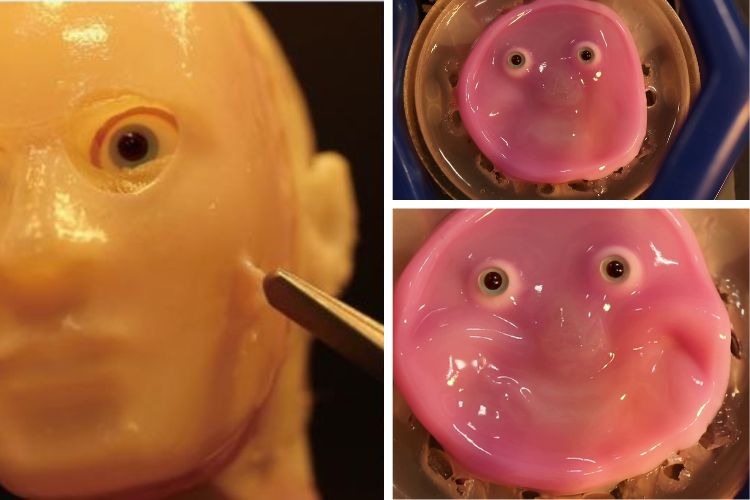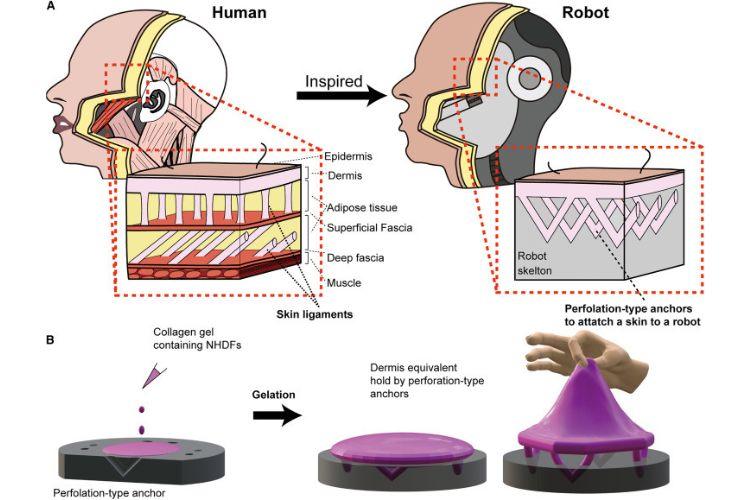
A group of researchers from Japan has introduced perforation-type anchors that could be used to adhere living skin to robotic surfaces, which is essential for mimicking real human-like expressions in humanoids. They initially tested this method with 2D robots and then applied it to a 3D facial mold.
Recently this month, a team of researchers at the University of Tokyo unveiled an innovation: human skin-like tissue that can be used as a covering for humanoids. However, the challenge that followed was attaching this skin to robotic parts. Even though the skin can mimic human skin, it lacks proper adhesion to robot components, making it less feasible to create realistic humanoids.

Inspired by human skin ligaments, which hold the skin to muscles, the researchers proposed perforation-type anchors to attach living skin to the robot's surface. This innovative approach aims to overcome the adhesion challenge and make humanoid robots more lifelike. The perforation-type anchors provide a secure attachment by allowing the living skin to integrate with the robotic surface, similar to how human skin ligaments connect skin to underlying tissues. This method ensures that the skin remains firmly in place while allowing for natural movements and expressions.
In addition to achieving more lifelike facial expressions, the study explored the relationship between the size and arrangement of perforation-type anchors and their anchoring strength. By tailoring the anchor density to specific areas, researchers can optimize the adhesion based on the function and interaction with the environment. For example, areas with frequent external contact would have a higher density of anchors, while regions requiring more flexibility would have fewer anchors.
With this breakthrough, researchers have overcome a major hurdle in humanoid development, paving the way for more lifelike and functional robots in the future. The integration of human-like skin with robots not only improves their aesthetic appeal but also enhances their interaction capabilities, bringing us closer to a future where robots seamlessly blend into our daily lives.

